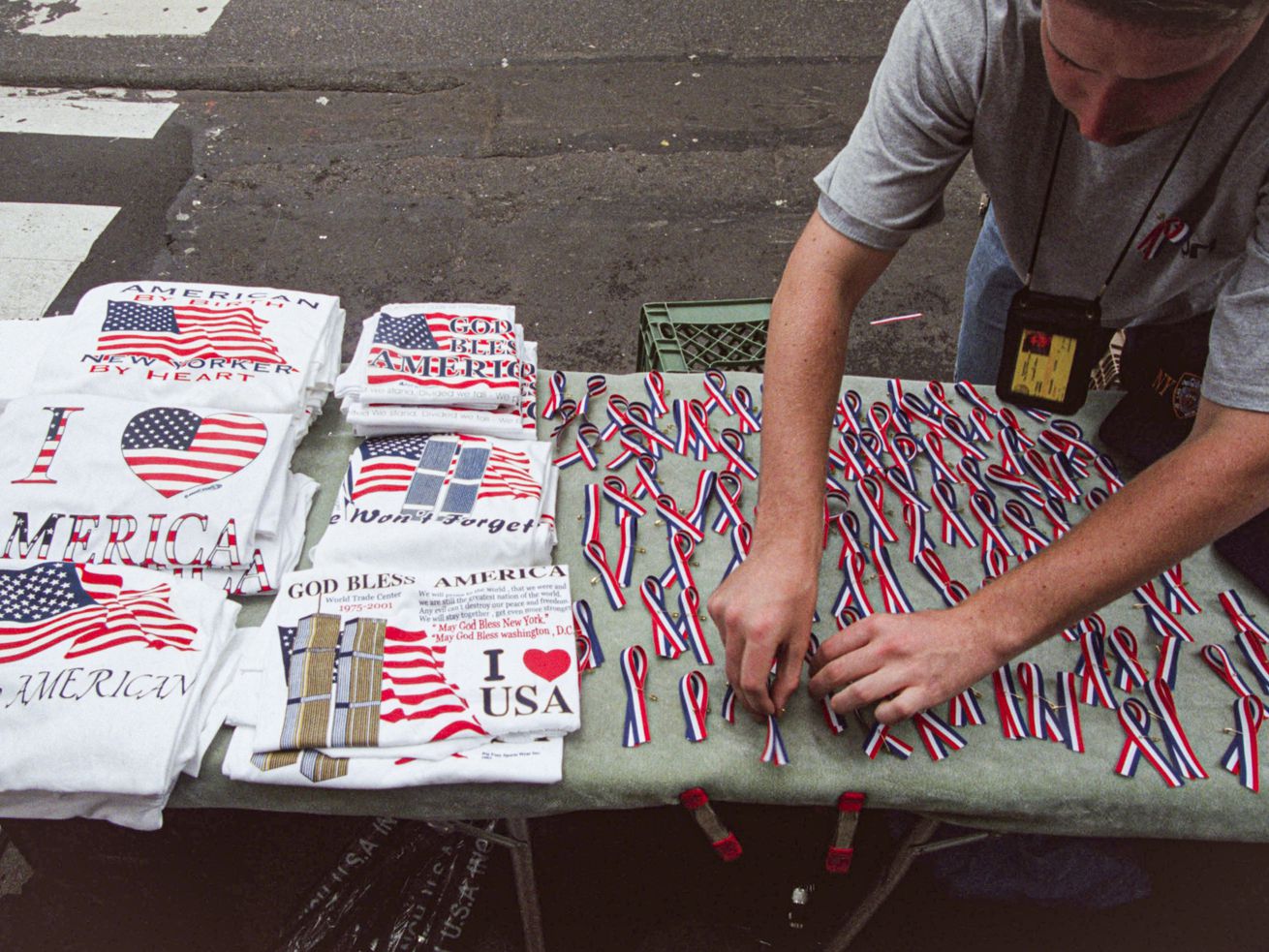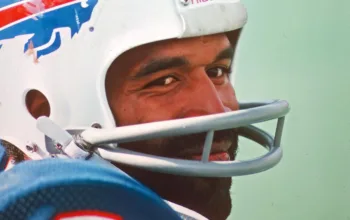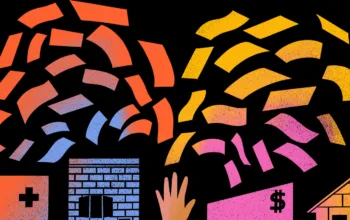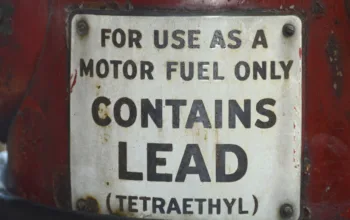How 9/11 convinced Americans to buy, buy, buy.
In the wake of the September 11, 2001, terrorist attacks, fashion designer Steve Madden was caught in a relatively minor scandal involving actor Denis Leary, firefighters, and shoes with fake gemstone American flags on them.
Madden and Leary had partnered to launch a line of sneakers — called the Bravest — to raise money for the families of fallen New York City firefighters. But Madden’s company failed to actually put any of the proceeds toward the purported cause. After reporters caught wind of what was going on, Madden’s company agreed to send 10 percent of its profits from the shoes to Leary’s charity. Still, then-Madden CEO Jamie Karson shrugged it off. “The most patriotic thing we can do,” he told the New York Times at the time, “is make money.”
Crass, maybe, but also within the prevailing spirit of the day. Consumers buying the sneakers wanted to perform an act of patriotism by financially supporting heroes, but the simple act of consumerism could be interpreted as patriotic, too. At least, if you believe in a certain version of patriotism.
This version of patriotism — consumer patriotism — was on full display after the attacks on the World Trade Center and the Pentagon and the hijacking of United Airlines Flight 93 in 2001. The message from political leaders was that the way for Americans to move past the tragedy and overcome their fears was to spend money and spur the economy.
In an address to the nation on the evening of the 9/11 attacks, President George W. Bush reassured the public that “our financial institutions remain strong” and the American economy was still “open for business.” He would go on to tell people to “get down to Disney World in Florida” to help shore up the country’s hurting airlines. “Take your families and enjoy life the way we want it to be enjoyed,” he said. Vice President Dick Cheney called for the public to “stick their thumb in the eye of the terrorists” by not letting what had happened “in any way throw off their normal level of activity.” Political leaders declared that the terrorists “hate our freedoms” — of religion, of speech, and, apparently, of the ability to snap a picture with Minnie and Mickey and buy stock in Exxon.
Corporate America, naturally, was happy to oblige. General Motors advertised that it would “keep America rolling” with interest-free financing. Ford followed suit, pledging to “do their part to move America forward” by offering the same deal. The country saw a proliferation of American flag-themed merchandise. The national catastrophe could be commodified, packaged, and sold for profit. Was it exploitative? Maybe. But participating in that exploitation, as long as you were spending, was reaffirming the American way.
There were concerns that the attacks would harm the economy if people were afraid and curbed their activity, and corporations and political leaders alike were determined to make sure that didn’t happen. Economically, the consumerist push worked, and Americans did their patriotic duty to spend.
/cdn.vox-cdn.com/uploads/chorus_asset/file/22835427/GettyImages_119034390_copy.jpg) David L Ryan/The Boston Globe via Getty Images
David L Ryan/The Boston Globe via Getty ImagesThis notion of consumer patriotism isn’t unique to 9/11. American colonists boycotted British goods and were expected to buy American during the Revolutionary War; in the 1920s and ’30s, there was a push to buy American fashions. The US set itself apart from the Soviet Union, in part, through consumerism during the Cold War. In the midst of the financial crisis, Warren Buffett told investors, “Buy American. I Am.”
During the Covid-19 pandemic, consumers have been on the receiving end of competing messages around buying. Americans weren’t supposed to spend on things like restaurants and travel, but they were supposed to order delivery to try to save local restaurants, and brands were constantly reassuring consumers that they were here for them. Now, there’s a sense that, once safe, it’s a duty to spend the way to recovery. And as brands have become more political, consumers are often voting with their dollars in deciding where to shop — and where not to.
There’s an earnestness to this — in the face of crisis, people want to do their part, and if consuming is a way to do that, so be it. But there’s a cynical interpretation, too: To be a patriot is to wholeheartedly believe in American capitalism and the strength of the US economy, to pledge allegiance to the flag and the market. Consumer patriotism reduces civic participation to spending money.
The calls for Americans to buy their way past the 9/11 attacks did not go unnoticed at the time.
“The theory is that we demonstrate our resolve to the rest of the world by investing and consuming at least as much as we did before, preferably more,” wrote Robert Reich, the labor secretary under President Bill Clinton, in an article published on September 23, 2001. “The terrorists tried to strike at the heart of American capitalism. We show that American capitalism is alive and well by giving it as much of our credit card as possible.”
In moments of national crisis, one of the most important dangers to the economy is that people will cut back on spending, pushing the country into a recession and costing people their jobs. When the 9/11 attacks happened, the US economy indeed was in the midst of a mild and short-lived recession.
In an interview with Vox reflecting on the rhetoric of the time, Reich acknowledged this was part of the fear — that a national tragedy could become an economic crisis. Still, he said, spending as an expression of patriotism is peculiar. “If you think about it for a minute, you see how really bizarre the idea is,” he said. “It has nothing to do with the notion of sacrifice. In fact, in many ways it’s the opposite.”
He offered up the example of World War II, during which, by contrast, Americans were asked to demonstrate their patriotism by giving up some luxuries, not buying more. “People paid more taxes occasionally, they bought war bonds, they individually sacrificed and cut back on a whole variety of consumer goods that they otherwise might want or need. They participated in rationing,” he said. “In other words, these national emergencies demanded that people respond to the common good.”
Instead, the response to 9/11 mirrored America’s approach to the Cold War. As historian Elaine Tyler May wrote in Homeward Bound: American Families in the Cold War Era, Bush’s call for a celebration of the way of American life mirrored Richard Nixon’s “kitchen debate” with Nikita Khrushchev in 1959, where the US leader and his Soviet counterpart engaged in a capitalism versus communism back-and-forth in a model kitchen at an exhibition.
“Although the president launched a hot war in response to the attacks, the cold war served as a model for the home front in the ‘war on terror,’” May wrote. “Telling his fellow citizens to ‘take your families and enjoy life the way we want it to be enjoyed,’ Bush, like Nixon, identified consumerism as the stealth weapon that would triumph over the enemy.”
While Americans were not asked to sacrifice with their wallets after 9/11, some did sacrifice in other ways — namely, the hundreds of thousands of troops who were sent to Iraq and Afghanistan in the wars that were sprung from the attacks. But Americans, by and large, didn’t feel those sacrifices economically or as consumers, even though trillions of dollars were spent (trillions of dollars that could have gone to other programs, whether universal health care or free college or universal pre-K). One of the phenomena of the wars of the past 20 years is that many Americans didn’t feel them at all unless they were directly involved.
“Ever since the end of the Vietnam War and the end of the draft, most Americans are not really aware of the sacrifices wars entail,” Reich said. “The war in Afghanistan was almost a secret war in that for most of those 20 years it was unmentioned in the media, it was kind of on automatic pilot. There were certainly Americans who died there, and there was certainly a lot of money spent, but we never paid any attention to it.”
In America, there is a pre- and a post-9/11, and it is marked by the presence of flags. There was a boom of US-themed goods as corporations realized they could channel the country’s desire to express patriotism into profits. Consumers were hungry for the American brand and for products that expressed the values they felt were under threat. Businesses were happy to embrace the trend.
The Wall Street Journal documented the phenomenon at the time, marveling at the range of patriotic-themed items on the market, including pillows, T-shirts, and diapers. Manolo Blahnik was selling red, white, and blue heels priced at nearly $800; Ty Inc. had released two new Beanie Babies named America and Courage; a San Francisco designer had launched a line of patriotic prom dresses. Pro-military messages were on T-shirts and became quintessential features of NFL programming. From Osama bin Laden dart boards to toilet paper to wanted posters, the mastermind behind the attacks had become what the Washington Post described as a “capitalist tool.”
As the WSJ noted at the time, businesses using the flag on their products wasn’t new — there was a rise of patriotic products during the Gulf War as a demonstration of supporting the troops, and every year, there was a bump in such gear around the Fourth of July. But Maj. George Hood, the public affairs director for the Salvation Army, told the publication that they’d “never had a disaster where entrepreneurialism came to the forefront as rapidly as this one.”
/cdn.vox-cdn.com/uploads/chorus_asset/file/22835436/GettyImages_527470308_copy.jpg) In Pictures Ltd./Corbis via Getty Images
In Pictures Ltd./Corbis via Getty ImagesBeyond flag-themed merchandise, there was a push among companies to express solidarity and associate their brands with patriotism. General Electric ran an ad of the Statue of Liberty rolling up her sleeves that read: “We will roll up our sleeves. We will move forward together. We will overcome. We will never forget.”
Tying in their products and services with 9/11 and with America was good marketing. Many also promised to donate some of their profits to charity. Sometimes that worked; sometimes it didn’t. Consumers were buying CDs with the American Red Cross label on them and believing proceeds from books they were snapping up were going to the New York City Fire Department. In reality, their money was sometimes just being funneled into corporate coffers. Then-New York Attorney General Eliot Spitzer warned that people who wanted to give to charity at the time should just do it directly. “Don’t buy a shoe or a book or a CD,” he said. “Just write a check.”
There’s something comforting and cathartic in feeling like we’re in this together in the face of a crisis, even if part of the “we” is a faceless corporation. And post-9/11, it felt good for consumers to imagine they were committing a patriotic act by buying, especially in a situation where many felt so helpless.
But there is also the question of exploitation. The commodification of 9/11 in order to enhance a business’s bottom line is uncomfortable. During the 2002 Super Bowl, Budweiser, for one time only, ran a one-minute commercial honoring the victims of 9/11. It showed the company’s iconic Clydesdale horses trekking to New York City and taking a knee. The commercial is incredibly moving; it’s also selling beer. There are many examples of companies trying to invoke the attacks in ways that are much, much more egregious, such as an ad from a retailer that was discovered to seize the pay of more active-duty military members than any other company in America.
There’s an uneasiness around the line between honoring 9/11 and exploiting 9/11 that has persisted over the years. When the gift shop opened at the 9/11 museum in New York City in 2014, some people expressed dismay at what one family of a person who died in the attacks described as an example of “crass commercialism.”
/cdn.vox-cdn.com/uploads/chorus_asset/file/22835476/GettyImages_90097532_copy.jpg) Emmanuel Dunand/AFP via Getty Images
Emmanuel Dunand/AFP via Getty ImagesNow, as the 20th anniversary of the terrorist attacks arrives, many businesses and entrepreneurs are selling 9/11 memorabilia. They’ve found another opportunity to commercialize what is now a decades-old crisis. It’s important to remember what happened; it’s also hard not to wonder whether buying a “Never Forget” T-shirt is the right way.
On the 20th anniversary of 9/11, Americans and the world find themselves facing another crisis, though of a different type: the Covid-19 pandemic. What leaders asked of the public and of consumers at the outset of the outbreak was in many ways more in the spirit of World War II: to sacrifice, to stay home, to curb spending in order to save lives.
At the same time, there’s been a sense among consumers, essentially, of “What do we buy about this?” People shopped local to try to keep restaurants and bars and bookstores and other businesses afloat. There’s been a constant tension between prioritizing health and prioritizing the economy, and the government has filled in the financial gaps where consumers haven’t been able to, but only to a point. Now, as the country undertakes a rocky recovery, consumers are once again being asked to open their wallets, and people are being called back to work to meet what political leaders and businesses hope will be a surge in demand.
To be sure, not everyone can afford to join in. “It’s understandable that we would hear from national leaders, including economists, that we need to spend more to keep the economy going,” Reich said. “But the elephant in the room is there is widening inequality, the fact that it is really only people in the top 10 percent who have huge and growing discretionary income.”
The future of the American economy once again rests in part on the shoulders of consumer patriots.
Author: Emily Stewart
Read More



